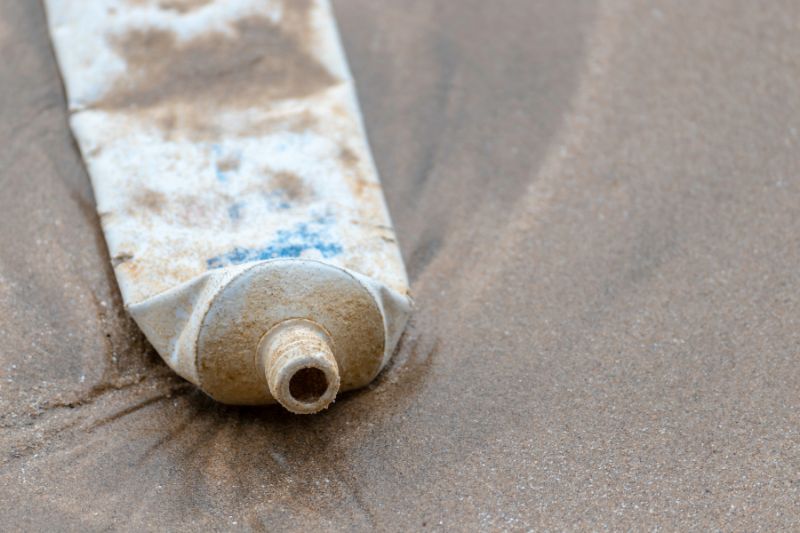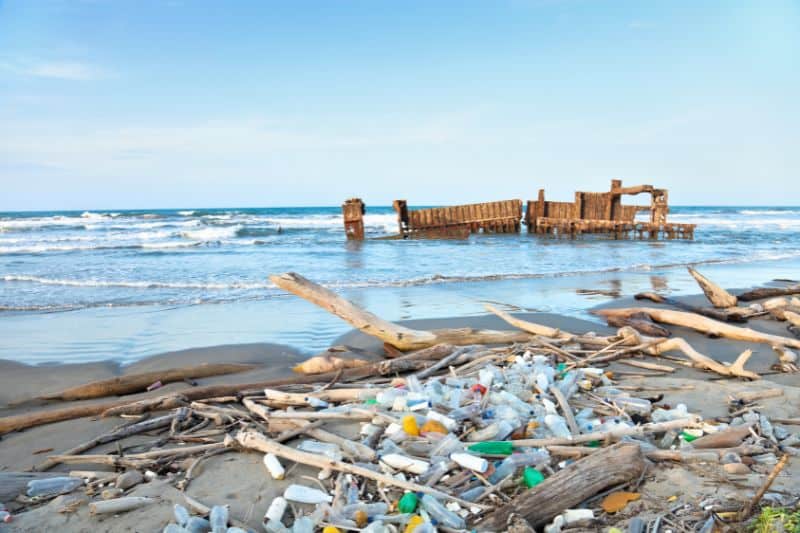There are several contributing factors to ocean dumping or marine dumping. Carelessness, ignorance, and lack of effective disposal systems are just some of the biggest causes. Since 70% of the earth is filled with water, the oceans and the seas continue to face all manner of dumping, especially in terms of waste material deposits from industries, sewerage, tankers, and factories.
The dumping of trash, such as plastics and construction waste, has also aggravated the situation. It is not a new environmental concern; as a matter of fact, it continues to escalate.
The internationally accepted definition of ocean dumping or marine dumping is,
“Any deliberate disposal at sea of wastes or other matter from vessels, aircraft, platforms, or other man-made structures at sea, and any deliberate disposal at sea of vessels, aircraft, platforms, or other man-made structures at sea.”
Ocean is more ancient than the mountains, and freighted with the memories and the dreams of Time
~ H.P. Lovecraft
Here are the cited causes and effects of ocean dumping, including solutions.
Causes of Ocean Dumping
Some of the main contributors to ocean dumping include the following:
1. Cargo Activity at the Ports

The various cargo activities at the port persistently contribute to the problem of ocean dumping. Dumping often takes place from the cargo that sweeps from the ships as they leave the port.
In most cases, it occurs during the removal of wastes such as slag, coal, and limestone from the deck. This is one of the unstoppable activities at the port that incessantly contributes to ocean dumping.
2. Carelessness in Terms of Sewer and Industrial Waste Dumping
The intensity of careless dumping of sewer and industrial wastes into the ocean has increased the magnitude and scale of marine dumping, especially considering the volume of sewage coming from ships, homes, industries, and factories. Due to carelessness, the wastes from sewers and industries are not treated before they are discharged into the ocean.
In some cases, the sewer drainage systems run directly into the ocean with all the dangerous materials, such as viruses, bacteria, cryolite, mercury, lead, and DDT. What’s more, some of the industrial wastes even contain radioactive materials.
3. Ignorance and Lack of Adequate Knowledge
For a long time, human populations have considered ocean dumping as a necessity or a rather safe method of disposing of waste. People have, for a long time, held the belief that dumping trash in the ocean dilutes and reduces the toxicity of the materials.
The point is that ocean dumping is partly caused by ignorance and lack of adequate knowledge on the impacts of releasing trash and other toxic substances into the ocean. As long as people hold on to the belief that it’s safe to dispose of trash in the ocean, ocean dumping will not cease.
4. Spillage From Offshore Rigs and Oil Tankers
Spillages from offshore rigs and oil tankers are prime examples of the contributors to ocean dumping. It occurs either on a large scale due to accidents or on a small scale where small amounts of oil are leaked into the ocean from oil tankers or tanker ships.
Large-scale oil spills are among the worst recorded cases of ocean dumping in history. One such notable scenario is the Deepwater Horizon oil spill, also known as the Gulf of Mexico oil spill, which resulted in the death of thousands of ocean creatures.
5. Direct Dumping of Waste Materials
Non-degradable and one-time-use materials such as plastics often find their way into the oceans because of direct dumping. It qualifies as one of the major contributing factors to ocean dumping on account that once the materials are introduced into the oceans, they last there for hundreds to thousands of years.
A very good example of the destructive impacts of direct dumping of plastic into the ocean is the Pacific Ocean Garbage Patch.
6. Mining of Metal Ores
Metal ores released from regions where drill mining is done, especially near water systems such as streams and rivers, eventually result in marine dumping. The reason for this is that the metal ores are continuously deposited in the streams and rivers at high toxic levels, after which they are carried by the water systems and discharged into the ocean.
Alternatively, deep-sea mining and the activity of mining metal ores adjacent to oceans also have a direct impact on ocean dumping. For instance, deposits of iron, arsenic, mercury, and sulfur are associated with deep-sea gold mining.
7. Lack of Strict Regulations and Observation Acts
The absence of strict regulations and observation acts to control the problem of ocean dumping is another huge contributor to the menace.
The regulatory authorities and individuals assigned the task of monitoring and observing the most vulnerable areas habitually take a back seat instead of being at the forefront of executing the laws put in place to guard against ocean dumping.
This is the reason some people and factories or industries take advantage, thereby engaging in direct dumping and the discharge of industrial waste into the ocean.
8. Runoffs From the Land

One of the major causes of ocean dumping is the runoff from the land, especially from the agricultural fields. Many farmers use chemical fertilizers in their fields.
When these chemicals mix with irrigation water, they leach into the soil and are then carried by rainwater into the nearest water body. From there, they’re then moved into the ocean, resulting in pollution.
9. Cargo Related Accidents
Sometimes, it so happens that the cargo carrying toxic materials meets an accident. It might result in some accidental oil spillage, or some other toxic material could get released in the ocean. These materials could be detrimental to the health of marine life.
Effects of Ocean Dumping
Some of the main effects of ocean dumping include:
1. Marine Life Extinction
The highly registered direct impact of ocean dumping is the death and extinction of marine life. All manners of ocean dumping threaten the existence and survival of marine creatures.
Let’s take oil spills, for instance. They are life-threatening for marine life and can destroy coral reefs, which provide suitable breeding grounds and shelter for numerous marine species.
Oil can also clog the gills of fish, causing suffocation. Of course, that’s without ignoring the fact that it can trap marine creatures like sea birds, mammals, and turtles, making them vulnerable to attack or suffocation.
Still, when oil floats on the surface of the ocean, it blocks sunlight from penetration, which is vital for photosynthesis.
The presence of viruses, bacteria, and toxic chemicals such as mercury and arsenic in the dumped materials can also have lethal effects. These elements can spread serious diseases or destroy some of the marine creature’s vital organs, causing them to die.
Plastics are also usually confused for food by sea creatures that, at times, result in death if swallowed. In fact, several sea birds and turtles have been found dead with plastics in their stomachs.
Besides all this, oil spills and other ocean dumping activities create a layer of toxins on the surface of the water. This layer is much like a blanket. This blanket prevents the sun’s rays from entering the depths of the ocean.
This, in turn, prevents the plants in the ocean bed from photosynthesizing. As a result, plants in the oceans die out, and the entire ecological balance of the ocean is disturbed.
2. Adverse Effects on Human Health

According to environmentalists, the oceans are living and interconnected. In other words, whatever is fed into the ocean from one end is what is got out of it.
This means that if dumping is done in areas close to where fishing is done, the toxic substances will be consumed by fish and gradually accumulate in their bodies. Upon consumption of the fish by humans, the toxic substances are introduced into the body, thereby making the victims experience undesired health complications.
Cases of food poisoning due to the consumption of fish affected with toxic waste substances have been reported. For instance, the WHO reported more than 50,0000 people have been affected by seafood poisoning.
It also linked a serious disease by the name Minamata with mercury seafood poisoning, which has been registered in more than 2,000 cases since the 1950s in China, Greenland, Canada, Brazil, and Columbia.
Besides, consumption of poisoned seafood such as crabs, shrimp, and cuttlefish has widely been associated with paralysis, delirium, brain damage, birth defects, and cancer.
3. Poor Oceanic Scenery
The problem with contaminated oceans and the ones experiencing high rates of dumping is that they look disgusting and dirty. As a result, they affect the scenery as the color of the water might turn black or green.
This kills tourism and recreational activities such as boating, surfing, fishing, and swimming. In the long run, it impacts the country’s image and economy.
4. Other Adverse Effects of Ocean Dumping Include:
Of course, the effects of ocean dumping don’t end at number three. Others include:
- Destruction of the coral reefs
- Marine ecological imbalance
- Loss of livelihood of the small fisheries and fishermen
- Destruction of natural habitats of marine life
- Loss of marine biodiversity
Solutions to Ocean Dumping
To try and mitigate the effects of ocean dumping, there are a few solutions that we can consider adopting.
Let’s take a close look at them:
1. Management and Minimization of Waste Dumping at the Port

Ocean dumping challenges compound day after day. Regardless, the waste substances that are disposed of in the oceans can be controlled through effective management and minimization efforts.
Primarily, efforts should focus on controlling and monitoring cargo activity at the port while limiting the amount of waste substances dumped into the ocean from the ships.
Moreover, by taking effective management and minimization strategies at the ports, cargo sweeping activity that releases slag and iron ore pellets can be controlled to reduce the possibilities of ocean dumping.
2. Education and Awareness Creation
The initiation of campaigns aimed at stopping ocean dumping can go a long way in educating people and creating awareness of the hard facts regarding the problem. Most people are unaware of the dangers of ocean dumping simply because they are not enlightened about its repercussions.
For instance, for a long time, some people have held onto the belief that dumping in the ocean eliminates the toxicity of the trash. In truth, this misconception is merely due to a lack of awareness creation.
So, the lack of education and awareness on the dumper’s part is to blame for ocean dumping. However, environmental networks like “Stop Ocean Dumping” campaigns can tremendously aid in addressing the problem.
3. Regulations and Laws
Regulations and laws account for the most effective tools for addressing the issues surrounding ocean dumping. As much as laws are put in place, further implementation of the laws is important. It’s not just enough to enact laws and regulations to mitigate the ocean dumping problems.
Rather, responsible parties, people and organizations must seriously assume their responsibility to deal with the common problems. Bans should center on convicting industries, institutions and people that engage in ocean dumping activities.
A great example is the Ocean Ban Act of 1988, which was intended to put an end to industrial sewage sludge and waste dumping at sea in the US.
Other prominent effective acts in history include the Ocean Dumping Act (ODA) and the Clear Water Act (CWA) initiated by the US to deal with ocean dumping problems.
In other words, the enactment and use of appropriate laws and regulations against ocean dumping can do wonders in mitigating the problem.
4. Organizing a Cleanup

In order to prevent or reduce ocean dumping, it is essential that we all do our part in cleaning up the mess. And in order to make that happen, a clean-up drive could be organized to clear the shoreline.
If the shore can be properly cleaned off the mess, ocean dumping rates can be reduced manifold. While the small wastes can be picked up by hand, agencies could be hired in order to clean the heavier mess on the shoreline. A clean shore could easily ensure a cleaner ocean.
5. Securing Items on the Boats
Often, it has been seen that the small boats on which the fishermen sail in the oceans can be a cause of the ocean dumping problem. It happens because the materials that they carry on the boat are often not properly secured.
This gives the wind a chance to blow things off the boat. Also, if the waves are big, the turbulence could also have the same effect or even worse. In order to prevent any event of this sort, it is better to ensure that everything on the boat is properly secured.
6. Raise Your Voice Against the Wrong
Everyone needs to do their bit to save the ocean. So if anyone is seen throwing things into the ocean or even if they are seen littering the shoreline, they must be stopped from doing the same. It is important to raise our voices against such an act openly. This could help in reducing ocean dumping.






